![]()
Children appearing in youth or crown courts in Wales and England cannot be named if they are under the age of 18, apart from exceptional circumstances as the European Convention on Human Rights says that all children have a right to privacy and a family life – which basically means that once they have served their sentence they then have a right to move on with their life.
But this was certainly not the case back in 1902 when, on Friday, 17th January – news broke of a boy who was charged with the willful murder of another boy going by the name of James Edward Rostron, aged 12, who had been missing since Wednesday, 15th January.
Frank Kershaw, aged 13 and who lived with his parents at Higher Lane, Haslingden in the North West of England, had known James for some time as both families lived nearby to each other, with the Rostron’s living at nearby Church Lane. And despite both boys being employed within different mills, Kershaw working at Hutch Bank Mill and Rostron working at nearby Plantation Mill, they would both see each other on a daily basis once work and schools had closed for the day.
They would also attend different schools. Frank Kershaw spent his afternoons at the Parish Church School whereas James Rostron would be educated at the Wesleyan School just off Manchester Road and it was from here that both children would meet up on a regular basis before making their way to their homes at the top end of Haslingden.
On the day of James’s disappearance on the Wednesday, both boys had been into work and as had been a regular occurrence in the past, Kershaw had called at the home of James at around 6am that morning before they both made their way into town and to their respected places of work.
Both boys would spend their mornings in the mills and then, after visiting their home’s for lunch, they would make their way into their respective schools.
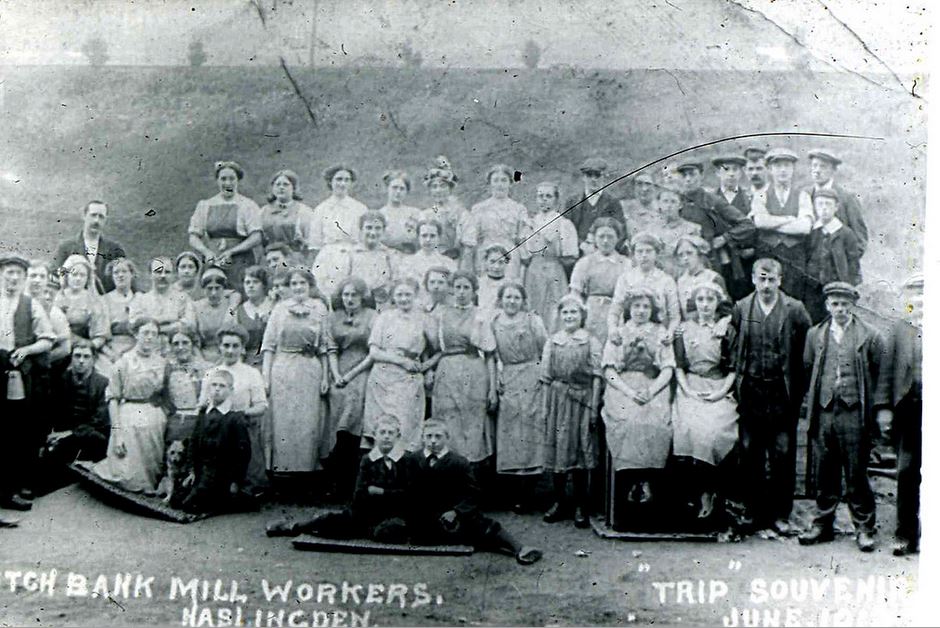
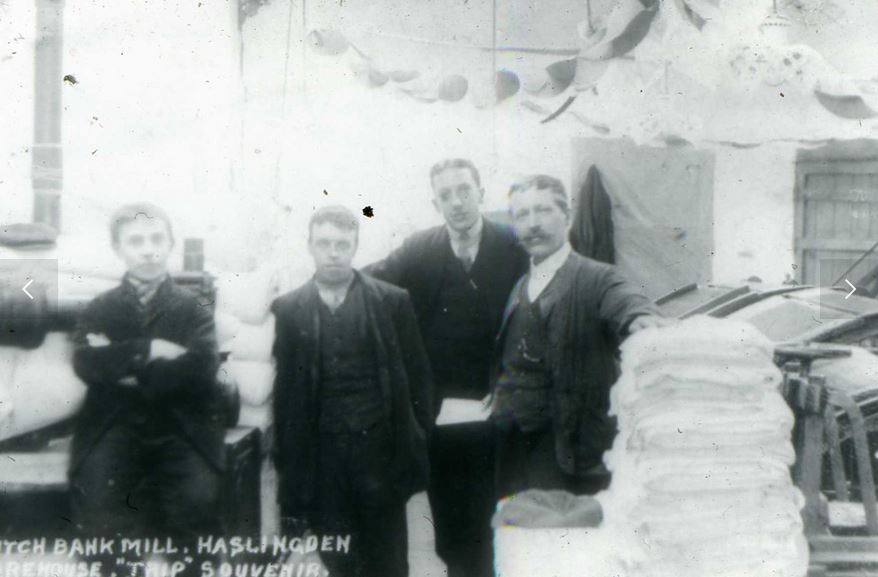
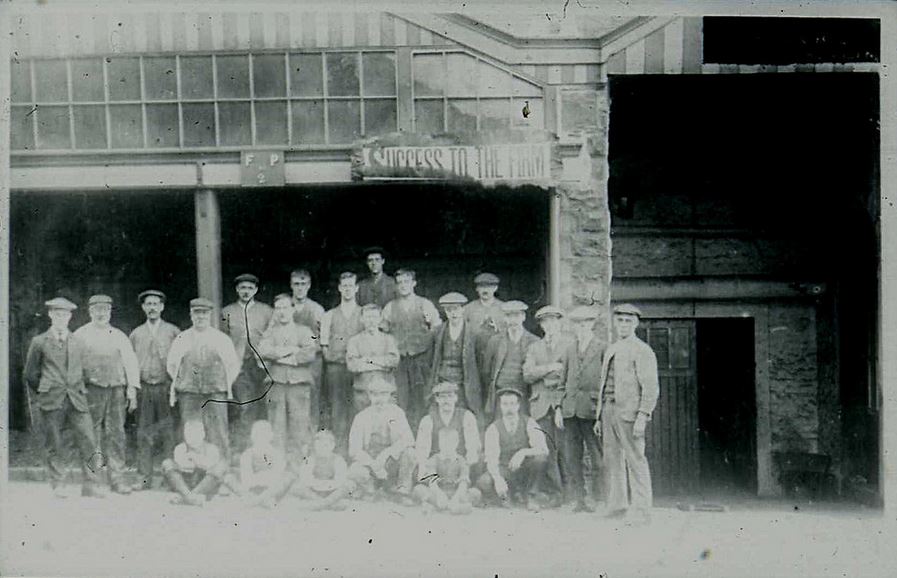
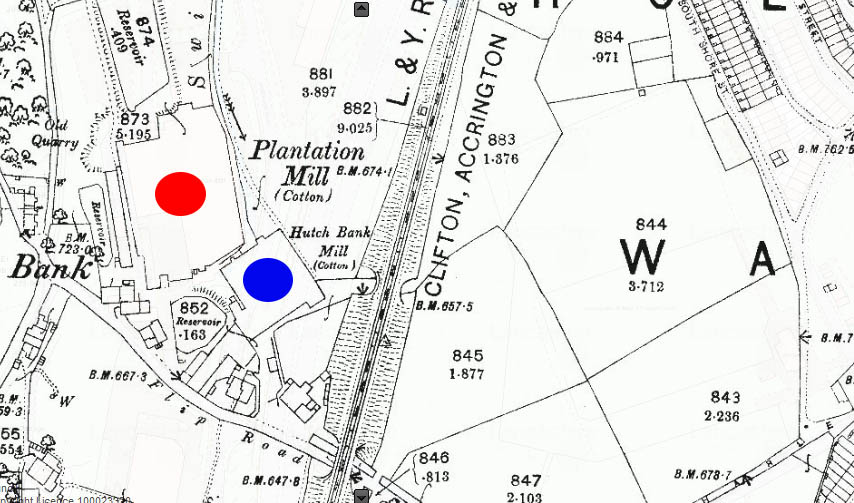
Location of Mills
Normally, both of the boys would leave school sometime around four o’clock in the afternoon but on this day in particular, Kershaw had said to Charles Henry Heathcote, head master of the Parish Church School, that he was wanted back at the mill he worked at and could he leave school a little earlier, to which he was allowed to leave at around 3.40pm.
Kershaw would then make his way over to the Wesleyan School and after speaking to a teacher named Sarah Swire, she allowed Rostron to also leave school early that day – at around 3.45pm.
Rostron and Kershaw would both make their way along Manchester Road in the direction of Deardengate before turning right onto what is now known as Higher-Deardengate. It’s at this point that a discussion about a watch that was sent to James Rostron from his Uncle who was then in South Africa, may have been brought up and perhaps Kershaw didn’t believe that his friend had such a valuable item in his possession, but one thing that is certain is that James Rostron went into his house shortly after four o’clock and was last heard rummaging around in a drawer. His mother, Elizabeth was in the back room and heard the drawer being opened. Upon shouting from the back room and asking what he was doing, James shouted back that he was “going out to play”.
As he was leaving the house, James turned back around and tried to persuade his step-fathers dog, which was sleeping on the sofa, to accompany him, but despite a couple of attempts, the dog remained reluctant to move so James made his way out, closing the door behind him.
After finishing her chores, Elizabeth went to check the drawer and noticed the watch missing.
A little later and when James failed to return home that evening, both his mother and step-father – known as Mr. Ingham, became frantic with worry. As well as looking around town, Mr Ingham went as far as travelling into Accrington, a town situated roughly 4.5 miles away, but his searching would prove futile as James could not be found. Just after midnight, Mr. Ingham would inform the police of James’ disappearance.
The following morning, Frank Kershaw called in at the Rostron’s house to ask if James was ready to walk to work with him. On being told that James hadn’t been seen or heard from since late Wednesday afternoon, Mr. Ingham asked Kershaw if he knew anything of his (James’) disappearance to which Kershaw said he knew nothing.
Kershaw would carry on as normal – going to work in the morning and into school in the afternoon and he would repeat the same thing the following morning on Friday 17th January. This time, James’ mother, Elizabeth would answer the door and Kershaw asked – “Is that you, James Edwards?” to which Elizabeth replied, “Do you know anything about James Edward?” Kershaw simply responded with, “No.”
It’s unclear, but the newspaper articles from the time seem to indicate that Mr. Ingham had at some point come across some information that seemed to say James was seen with another boy on the day of his disappearance. He approached Police Sergeant Maxwell with this information and the two of them accompanied Frank Kershaw into the Wesleyan School at 9.30am that same morning but Sarah Swire couldn’t positively identify that it was Kershaw who had taken James out of school on the Wednesday, however, she did say; “it was getting rather dark and he is much like him. But I could not say for positive.”
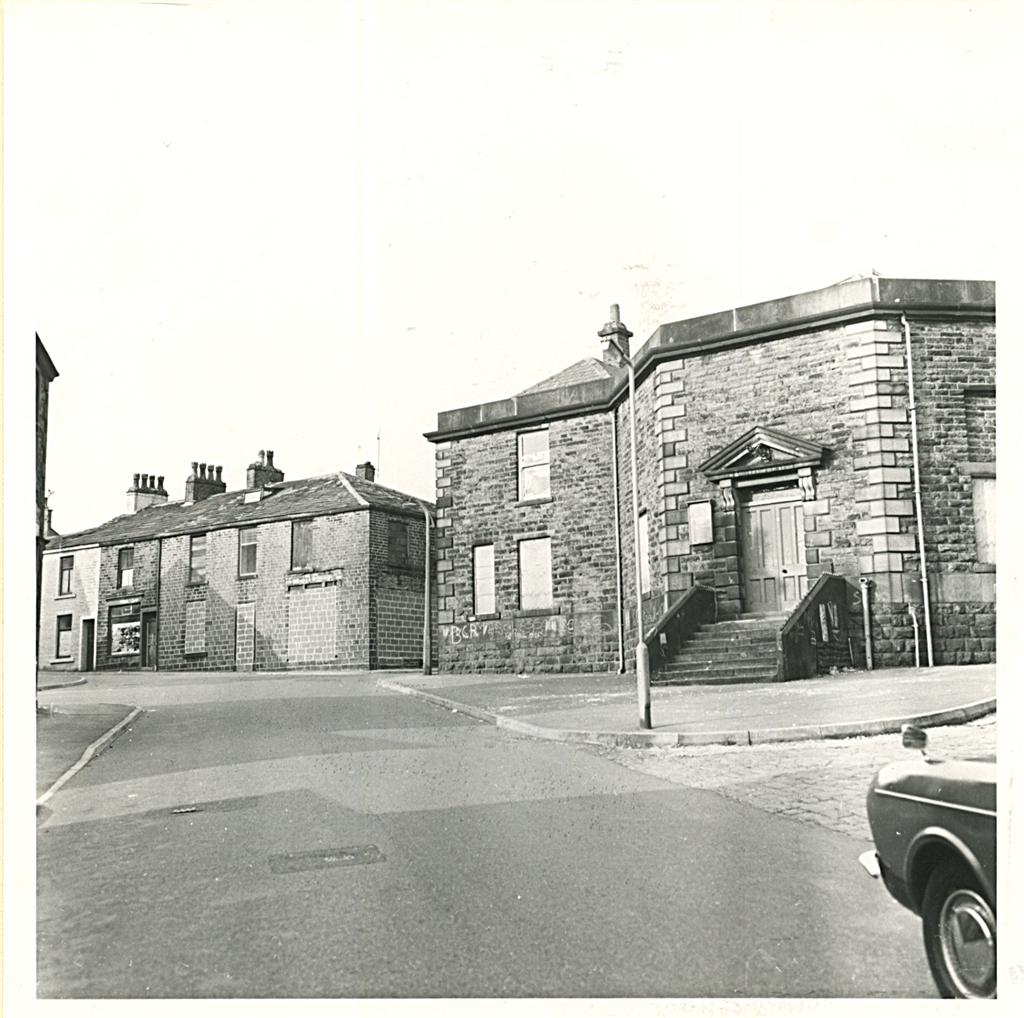
Haslingden Court House 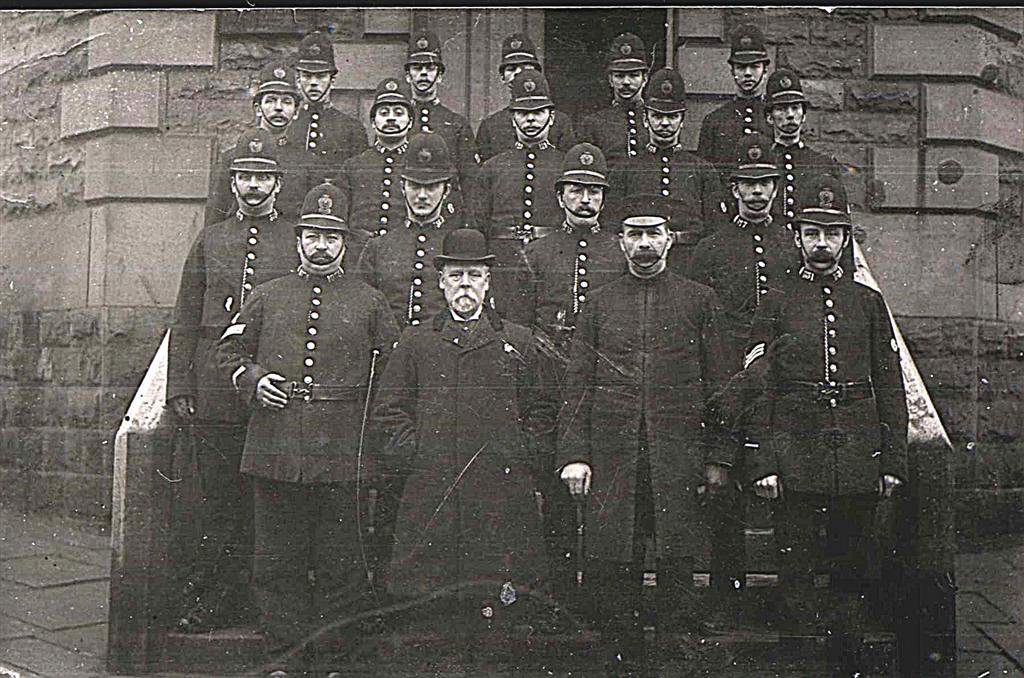
Haslingden Police – Sergeant Maxwell front row, left 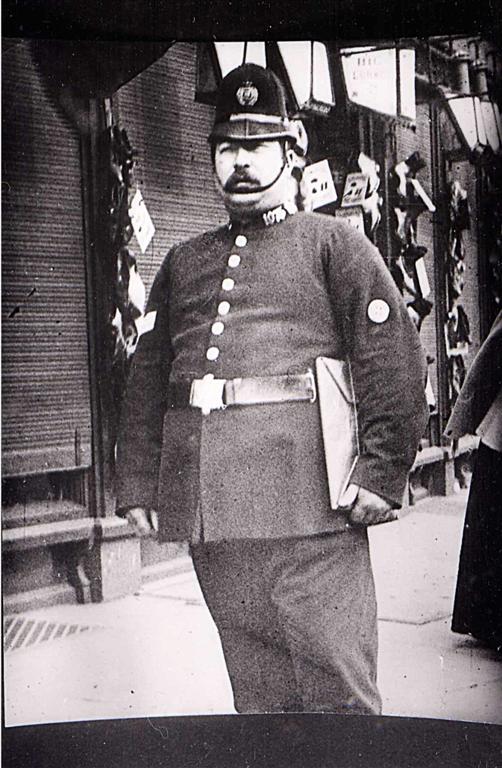
Police Sergeant Maxwell
Kershaw must have breathed a sigh of relief as he turned to Sergeant Maxwell and said, “Now, Mr. Maxwell, are you satisfied I am not the one.”
Leaving the school but still longing for answers, Kershaw’s joy at not being identified would not last for long as, making their way back towards the police station, 12 year old James Eastwood, who also attended the Wesleyan School, would identify Kershaw as the boy who was seen with James when leaving school on the Wednesday afternoon.
Kershaw this time didn’t lie and admitted that he had indeed taken James out of school saying, “I did leave the school with him and left him on Prinny Hill. He said he was going to swim his dog at the Top of the Slate, and I had to go to the mill.”
Back at the police station, Kershaw was placed into a cell but now he was starting to deny any knowledge of James’s whereabouts to the police. Both his mother, Elizabeth – as well as his Aunt, Eliza Shaw, as well as James’s stepfather all wanted to speak to him.
James’s step-father, pleaded with Kershaw to tell the truth, saying, “You know, I have looked high and low, and provided you were in my place, where would you look for him?”
Kershaw was reluctant to say anything and it took his aunt, Eliza Shaw to finally get through to him. As she knelt down before him, she placed her arms around his head and begged him to tell the truth. At first, he said he did not know, but soon changed his mind saying he had left James at the Staff of Life beerhouse.
“Oh Frank” said his aunt, “tell the truth, did you see him fall into the water?” A few seconds passed and finally Kershaw broke down, “Yes” he replied.
Looking over to Mr. Ingham, he went on to say, “Look up the Slate Lodge.”
As you could probably imagine, possibly the worst kind of thoughts would be flooding Mr. Inghams head after hearing his reply. He took off sharpish to the location Kershaw had just spoken off and it would be here that James’s cap would first be found floating in the water.
And it wouldn’t take too long before his body would also be discovered, floating face down in the freezing cold water. It seems that at this point, after identifying the body as that as being James Rostron, his belongings were also checked and it was now that his watch would also be recorded as being missing.
Slate lodge (or reservoir) was situated on the outskirts of Haslingden and not too far from where both boys lived. It was formed from a pit which had been quarried for stone. There was a narrow embankment which ran around it on three sides with a rising embankment that rose above. On the remaining side was a disused reservoir with little water in it and the depths varied between 3ft and 5ft at its deepest. The surface of the water was at least 3ft lower than the wall, thus making it practically impossible for someone to climb out should they have fallen in, unless of course they could swim to the shallower end.

Higher Lane 
Cribden End Lane 
Cribden End Lane 
Slate Lodge Quarry 
Slate Lodge Quarry 
Slate Lodge Quarry Area of murder (behind the wall)
After admitting to being with Rostron at the lodge, Kershaw, would be kept inside his cell until the following day and on Saturday, 18th January he would be brought up before the judge within the walls of the Haslingden Courthouse and charged with the willfull murder of James Rostron. He stood in the dock, seemingly unconcerned at the charges put before him as the evidence was read out and witness testimonies where made.
Kershaw’s background would be spoken about in a positive manner with witnesses going on to say that he was a bright lad who belonged to a respectable working class family whose mother was always talked about in a glowing way.
The inquest would only last a short time and Kershaw would be remanded until Monday, 20th January when he would again be brought back into the Haslingden Courthouse which was opened by Deputy Coroner, Mr. F.D. Robinson.
Charles Henry Heathcote, Sarah Swire, James Ingham, Elizabeth Kershaw, Sergeant Maxwell, Eliza Shaw, James Duckworth and Fred Walker would all take to the stand.
The inquest would be adjourned until Friday, 27th January but back in his holding cell, his mother would visit him once again.
She would ask him if he knew anything about the watch to which he replied, “I saw the watch in his pocket at the Slate. Before he went into the water I saw the chain hanging down from his waistcoat pocket.”
However, sensing Kershaw wasn’t telling the whole truth, his mother replied, “You have told us so many lies, Frank. We cannot believe you.”
Kershaw would then go on to say that after James had passed him the watch, he had given him a push into the lodge. Sergeant Maxwell intervened at this point, warning him that whatever he may say may be taken as evidence against him.
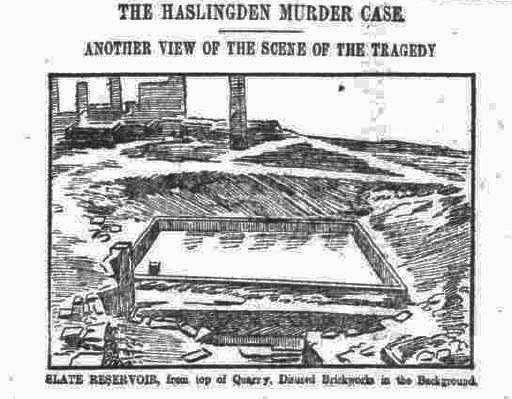
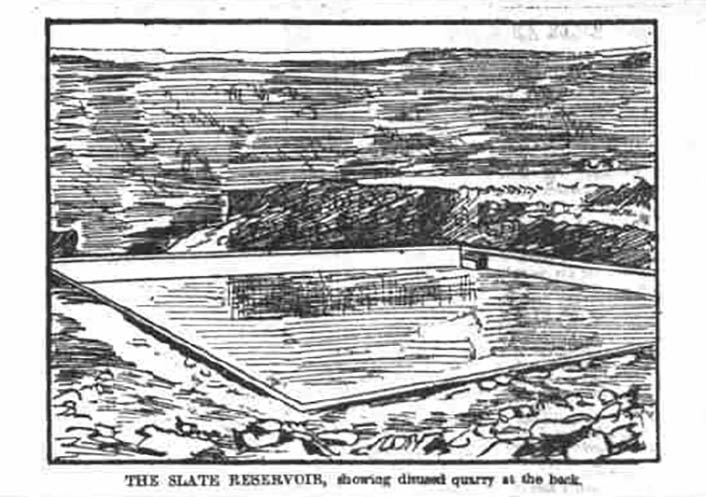
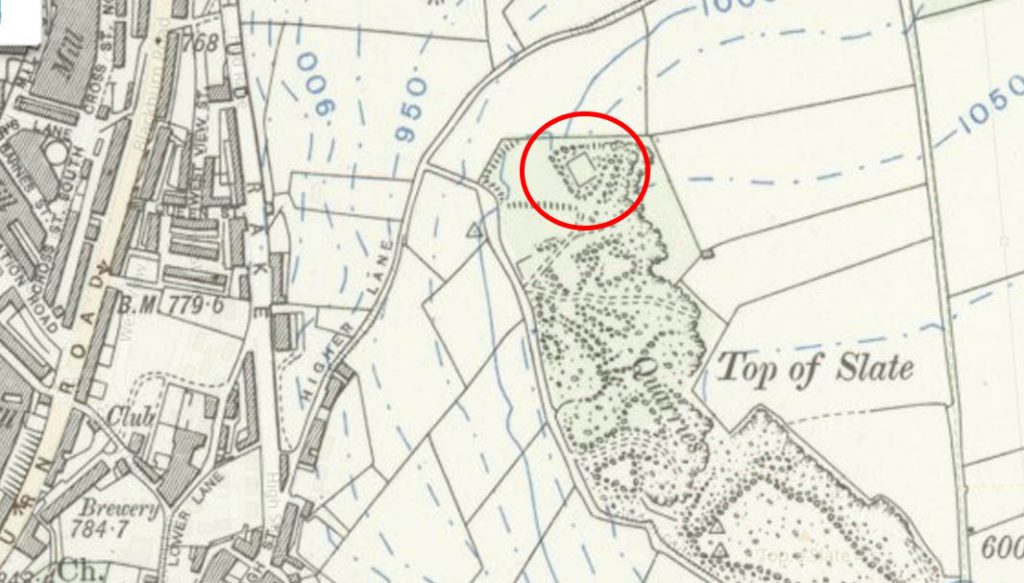
Location of Body 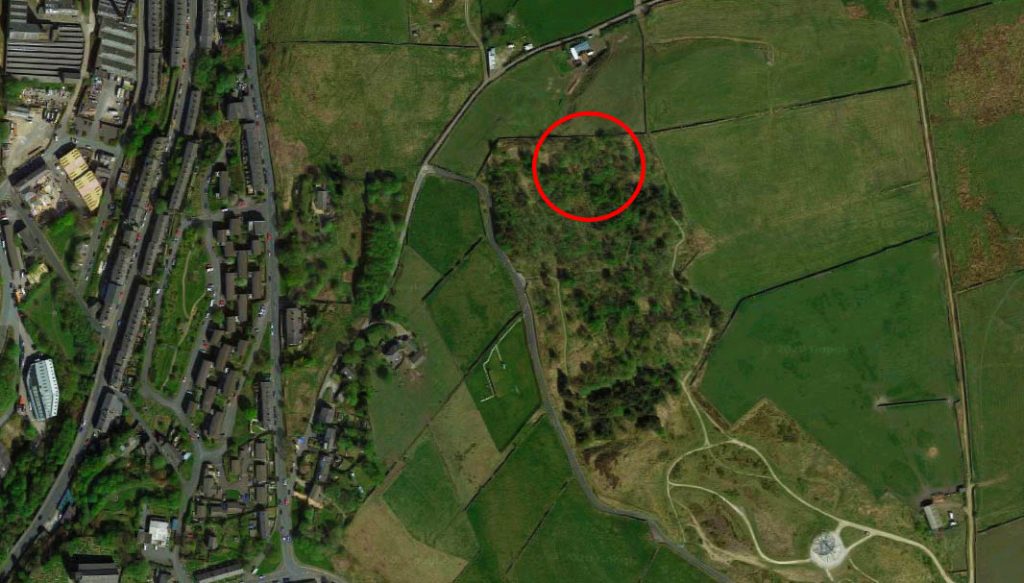
Location of body (January 2021) (c) Google Maps
Kershaw continued, saying that the watch could be found in a field near to the mill at which he was employed and upon checking, the police did in fact find the watch and chain in the location given by Kershaw.
In court, Dr. Harrison would give details as to the post mortem, suggesting that James had died due to drowning. However, he also noticed marks, resembling those to a bite, found to be on his left hand, which he was of opinion were inflicted before death. Horace. A. Miles then went on to produce a photograph of the bite mark and after examining the teeth of Kershaw, Dr. Harrison was quite convinced the marks on the hand did correspond with the teeth of the prisoner.
Superintendent Whittaker, prosecuting, would again bring into court all of the witnesses that took to the stand during the previous inquest.
Concluding the case, Frank Kershaw was formally charged with the willful murder of James Rostron and when asked if he had anything to say, he replied, “I am not guilty.” He was then committed for trial at the Liverpool Assizes that would take place on Tuesday, 18th February 1902.
The trial wouldn’t last too long and despite the best arguments led by the prosecution, who would try and convince the jury that a scuffle of sorts had occurred between both boys and that Kershaw had pushed James into the water after having taken the watch and chain off him. They would argue that Kershaw had no intention of saving Rostron, instead opting to hold his head down in the water. Kershaw’s defense team on the other hand put before the jury that Rostron’s drowning was inconclusive and that whilst James Rostron had indeed fallen into the lodge, there was no concrete proof that Kershaw had held him down. With this, the jury returned a verdict of manslaughter and the sentence was deferred until the next morning.
On Wednesday 19th February and before Mr. Justice Bucknill, Frank Kershaw stood in the dock ready to hear his fate. He was told that if he had been just one more year older, the jury would have found him guilty of murder and thus sentenced to death. The judge would sum up saying that whilst it may or may not have been an accident and Kershaw may or may not have pushed James into the lodge, he would have to serve a minimum of ten years penal servitude.
Kershaw would serve his ten years sentence as handed down to him but that was not the end of his punishment as he would go on to serve sometime within a borstal of which further information is unknown at this time. He would eventually relocate to Bury, Lancashire and died at the age of 47 in September, 1934.
James Edward Rostron would be interred within the grounds of St. James Church, Haslingden on the 21st January 1902 – cause of death being that of drowning. He was just 12 years old.
Thanks to https://haslingdens.blogspot.com for valuable information and photos used for this article.
Thanks to https://peterfisher.smugmug.com/History (Peter Fisher) for allowing the use of photos used for this article.
Sources used for this story;
Lancashire Evening Post – Monday 20 January 1902
Manchester Evening News – Monday 27 January 1902
Berwickshire News and General Advertiser – Tuesday 25 February 1902
Lancashire Evening Post – Monday 27 January 1902
Burnley Express – Saturday 15 February 1902
Cotton Factory Times – Friday 24 January 1902
+ many more courtesy of the British Newspaper Archive – www.britishnewspaperarchive.co.uk
Please follow me on social media;
Twitter – https://twitter.com/dohpods
Instagram – www.instagram.com/dohpods

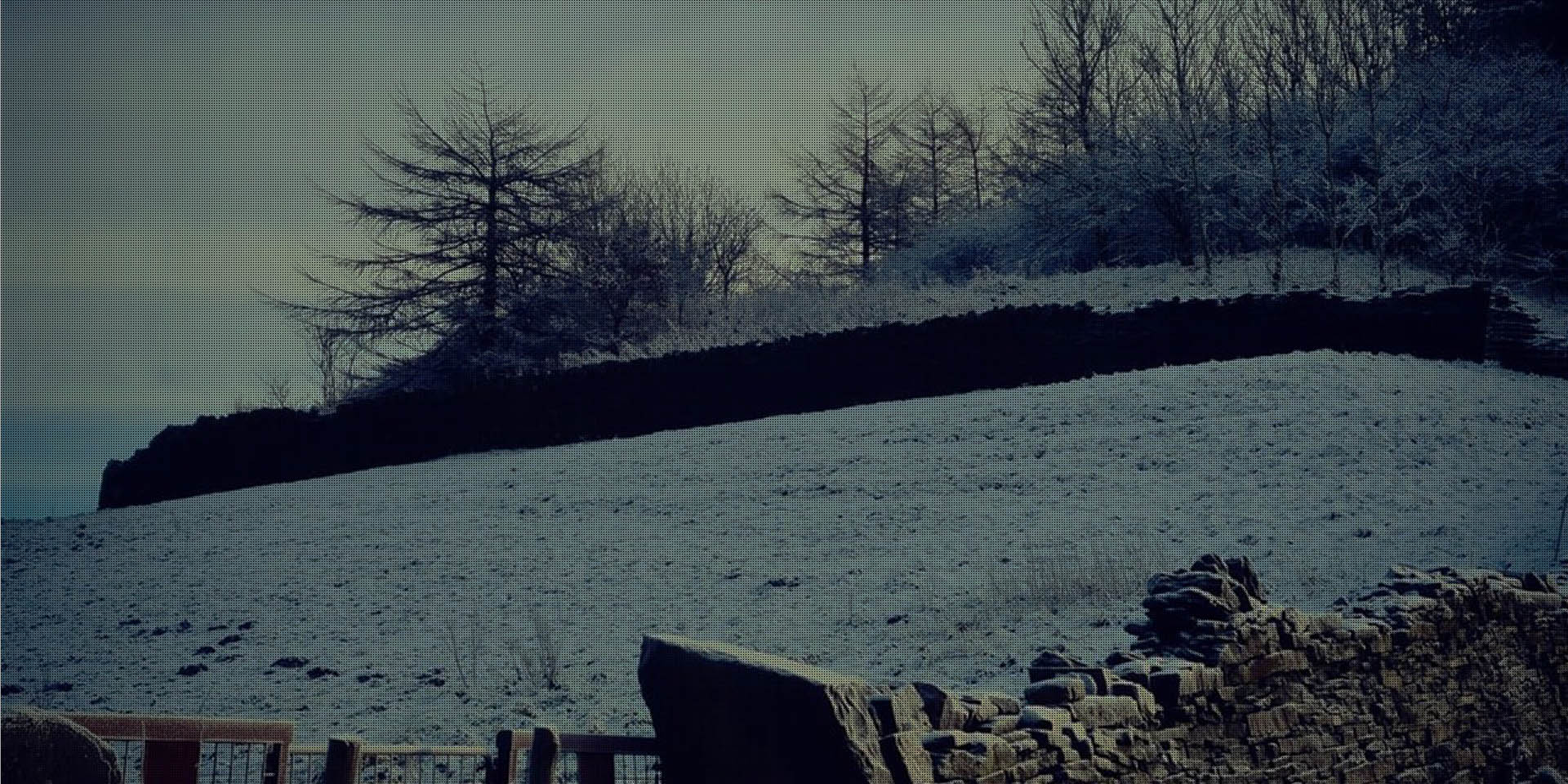
Leave a Reply